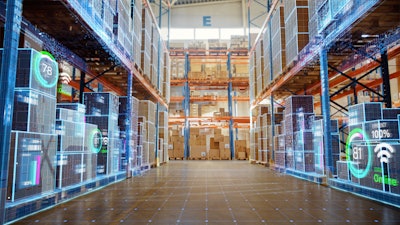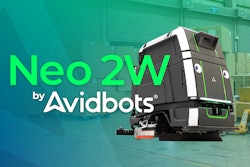
Given that supply chain and logistics operations are so labor-intensive, and resource scarcity is only expected to get worse, companies need to take a more strategic view of their operations. Instead of focusing just on more effective hiring, they should be paying significant attention to retention and the productivity of labor, empowered by their data.
Analytics aren't hard…but, having good analytics that provide actionable intelligence is. Organizations want to know what their data is telling them. They need to visualize data in ways that make it easy to understand and utilize. That’s why data scientists will play such a critical role going forward in helping to make warehouse workers jobs easier and driving the machine learning that will empower better productivity and business sustainability.
Understanding the maturity cycle of data
Jumping straight into using machine learning or advanced data analytics won't solve workforce woes alone and can be extremely risky. There are many layers to utilizing data, with each layer building upon the foundation laid by the others, like a pyramid. Prescriptive analytics powered by machine learning is the capstone, but without the rest of the pyramid beneath it, all you have is a shiny triangle in the dirt.
Let’s explain further by taking you through the analytics maturity model. In order to make any decisions at all with data, you have to actually be collecting it. Data can come from a number of sources. That includes your ERP or WMS that capture and store general transaction data, or IoT (Internet of things) interconnected machines (conveyors or sorters with sensors, etc.) and devices (printers, mobile computers, etc.) that collect and share massive amounts of real-time data. With all of this data available within your business, you might be wondering where you start. Coming up with a plan, and collecting the right data, is a difficult thing to do.
That’s why lots of companies default to collecting as much data as they can and storing it. Once you've identified a business problem that you want to solve, in most cases, you'll need to cleanse the data for it to be usable. Data cleansing involves finding and removing errors, inconsistencies, duplications and missing entries from your data to increase data consistency and quality. Some specific examples of cleansing warehouse data are things like, not counting breaks against your productivity or using pick velocity instead of replenishment velocity. Cleansing also involves putting business knowledge on top of the data, structuring the data and transforming the data into reports and dashboards, to prepare it to move up the maturity curve. With your collected data, you can begin moving up the scale of value, starting with descriptive and diagnostic data, and building to a projected future state of predictive and prescriptive data.
As explained by the Harvard Business School, those four types of data break down simply like this:
- Descriptive – answers, “What happened?”
- Diagnostic – answers, “Why did this happen?”
- Predictive – answers, “What might happen in the future?”
- Prescriptive – answers, “What should we do next?”
We’ve got the data, now how do we use it?
With most descriptive and diagnostic data, which includes things like raw data, “cleaned” data and standard or ad hoc reporting, you are in the mindset of sense and respond. It is very reactive, static, and also historical, capturing a particular moment in time. Presented generally in the form of dashboards, reports and emails, you can possibly see trends, and utilize that in decision making. However, by the time you use it, the data may have changed, making it inaccurate and less useful. Some insights descriptive data can offer:
- How often did our order picking fall behind schedule causing shipping deadlines to be missed?
- What are the velocities of our products and current order picking productivity?
- How productive is each of my pickers?
Descriptive analysis can help identify trends in customer behaviors and help predict where there is likely to be a demand. Techniques, like data visualization, can be used to build better dashboards, reporting or analytics tools. This allows decision makers to have the best information available to them so they can make optimize decision making.
Connecting data to business challenges
The next stage is where data scientists become crucial. You can’t just throw data in a computer and command it to learn and give you all the answers. You need to have people who understand the problems the business is trying to solve, and can translate that into potential inputs, algorithms and outputs for a model. Data scientists are like chefs, taking in the ingredients of your business challenges, deeply understanding the recipes behind machine learning, and applying the right data ingredients to produce an exquisite dish of predictions and actionable intelligence. This is where we move into the domain of predictive analytics.
The scientists must also identify the correct type of model for your use case, and know how to properly train, deploy, and maintain that model. It’s a lot of work and doing it wrong can mean that your model doesn’t work. Or worse, the model works but gives bad outputs that look good, and you end up making important business decisions that actively harm your operation and workers.
Machine learning to drive productivity
One of the best use cases of AI and machine learning is in measuring productivity. Traditionally this is done using engineered productivity standards. If you make any changes to your warehouse layout, product offerings or operations, those engineered standards become out of date and are less useful. This can mean spending more money to get updated engineering standards.
Instead, if you use machine learning to measure productivity from the years of data and knowledge that you've built up on your operations, you can use these models to predict what your standards should be, much faster than traditional methods. The biggest benefit from this approach is that it's constantly adapting and learning from the data as the business continues every day - day in and day out. All of that data is going back into the model, and you're learning from it.
What are some specific examples in the warehouse? Seasonality, for instance, can be learned through the model over time. Knowing how productive your workers are allows you to make your processes more efficient during peak periods. Maybe certain workers are better at certain types of picking, so we can allocate workers to zones or work areas that utilize that competitive advantage. You can apply the same principal to batching. When a picker is ready for their next assignment, you can assign them a batch of work that plays to their strengths. Maybe they walk very quickly so you give them a longer route. Maybe they pick items lower to the ground quickly, so we fill their batches with low picks. If you know how productive workers you are can estimate where they are in their routes at any given moment and predict and build a batch that will avoid creating traffic jams.
Continued optimization through learning and adjustment
Having a machine learning model provides you the ability consistently inject data and get to an elevated stage of prescriptive analytics. Starting from your optimizations from the past and understanding that things are changing, you can review slotting, current events, weather and workforce adjustments, which is all information that can change decisions. You can play “what if” scenarios to have the model regenerate optimization scenarios that allow you to prioritize replenishment over picking or enhance safety and minimize congestion in the warehouse. Think about some of the questions you could answer:
- What should we do about order picking assignments that are predicted to cause shipping deadlines to be missed?
- What slotting changes should we make to improve order picking productivity?
- Which pickers are my most productive, independent of the type of work they do (case pick to pallet, each pick to cart, case pick to conveyer, etc.)?
In the world of supply chain and logistics, companies are facing increasingly complex and resource-scarce environments. To stay competitive, you must take a more strategic view of their current workforce and focus on things like retention and productivity. Mining data can begin to give you the insights needed to build better processes and become much more proactive in planning and optimization strategies. However, if you don't know how to use your data effectively, it will be increasingly difficult to get to meaningful insights. You need to align your data with scientists who have domain knowledge, a keen understanding of the business challenges, and the objectives your organization needs to solve for. They can define what’s important and then build systems which predict outcomes and optimize your resource allocation, increasing productivity while making warehouse jobs easier.



![Pros To Know 2026 [color]](https://img.sdcexec.com/mindful/acbm/workspaces/default/uploads/2025/08/prostoknow-2026-color.mduFvhpgMk.png?auto=format%2Ccompress&bg=fff&fill-color=fff&fit=fill&h=100&q=70&w=100)







![Pros To Know 2026 [color]](https://img.sdcexec.com/mindful/acbm/workspaces/default/uploads/2025/08/prostoknow-2026-color.mduFvhpgMk.png?ar=16%3A9&auto=format%2Ccompress&bg=fff&fill-color=fff&fit=fill&h=135&q=70&w=240)







